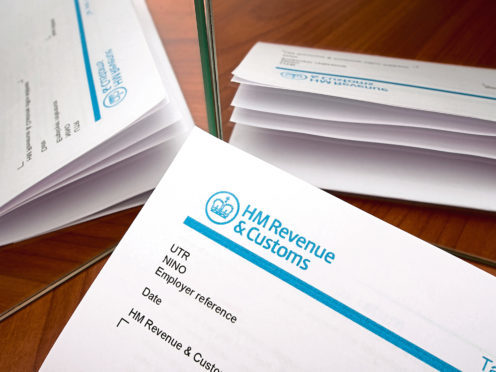Death, taxes and a post-Budget spat between the UK and Scottish governments.
All are certain in life, although the direction of the tax system in Scotland has appeared a little less so this week.
Traditionally, of course, the annual descent into acrimony during Budget week has focused on whether Scotland’s grant has been generously uplifted by hundreds of millions of pounds, or cruelly cut by a similar amount.
But while that debate continued this week, it was overshadowed by a dispute over income tax.
Chancellor Philip Hammond’s changes to middle class rates in the rest of the UK were said to have plunged his counterpart at Holyrood, Derek Mackay, into a fiscal “nightmare” that would lead Scotland to the brink of a “disaster”.
The source of Mr Mackay’s “dilemma” was the chancellor’s announcement that the salary threshold at which workers pay the 40% higher rate of income tax in the rest of the UK will increase from £46,350 to £50,000, while in Scotland it is currently £43,430.
Calculations suggested people earning £50,000 would end up paying more than £1,100 extra to live in Scotland, prompting fears such earners would “vote with their feet”.
The subject of the row should not have come as a surprise to anyone.
Indeed, similar arguments were made last year when Mr Mackay pledged to utilise Holyrood’s revenue-raising powers to create a new income tax system, and the only unexpected element of Mr Hammond’s change was that it was being implemented a year earlier than planned.
Nonetheless, it does leave the Scottish Government with slightly less room for manoeuvre as its own spending plans are finalised.
There are, of course, risks for other parties too.
The Conservatives have made much capital out of the issue this week and will not doubt continue to sow the seeds of discontent in “middle Scotland”.
But they too will know that dying in a ditch over these tax breaks will bring accusations that they are prioritising the wealthy at the expense of lower earners, a difficult position to be in as public spending cuts continue to bite.
For Scottish Labour, meanwhile, leader Richard Leonard has the discomfort of being at odds with his Westminster-based colleagues on support for Mr Hammond’s move, although at least his party no longer looks like such a “branch office”.
It is the job of Mr Mackay and the SNP to respond to the Treasury’s decision, however, and all the signs so far have suggested that the clamour for them to pass on the tax break will fall on deaf ears.
It is a relatively easy stance to take, in some respects.
To get a Budget through Holyrood, Mr Mackay will almost certainly have to strike a deal with the Greens, who will not back the support for higher earners, and a large chunk of the SNP’s own base feel the same way.
The finance secretary will also know that the backlash last year over his tax changes was short-lived, and that more than half of Scots surveyed supported the shake-up, with just a third saying it was “unfair”.
Such polls can perhaps be explained by the numbers involved.
It should not be forgotten that 2 million people in Scotland, about 44% of adults, do not pay any income tax at all because they do not earn enough.
And of the remaining 2.5 million income taxpayers, 70% paid less this year as a result of Mr Mackay’s changes, as well as a personal allowance extension from the UK Treasury.
The number who pay the 41% higher rate – the band at the centre of the current row – is about 350,000.
But while it is a relatively small proportion of the total, and should be kept in context, it is far from insignificant.
These are senior teachers, doctors and business managers – some of the professions areas such as the north and north-east have already been struggling to recruit in sufficient numbers.
Despite this, Nicola Sturgeon quickly played down the prospects of passing on the tax break, saying Scotland had “chosen to take a different path”, with Mr Mackay echoing the sentiment when he pledged to stick to a “more progressive path”.
The language deployed was interesting, evoking a journey which they clearly believe Scotland has embarked upon, one which is very much separate from the rest of the UK, and from which they will not turn back.
As ever, the expedition is also one which, it can be presumed, they hope will help lead the nation to the SNP’s ultimate destination of Scottish independence.
No matter the complications, each Scottish Government policy which distances the nation from the rest of the UK appears designed to prove that Scotland has inherently different priorities, can cope on its own and will one day be so far removed that the only logical remaining step is independence.
But therein lies the rub – the SNP will need to ensure there is a pro-independence majority in the next parliament to secure another referendum, and the party already lost ground at last year’s UK poll in some of the areas heavily populated by people with higher levels of disposable income, including the north-east.
And to win a second referendum itself may require changing the minds of exactly the type of voters affected by the tax gap, with one Edinburgh University study showing more than 58% of people identifying as “middle class” voted No last time.
It is not clear how Mr Mackay will attempt to square that circle at his own Budget on December 12, but whatever he does, another row is certain.











